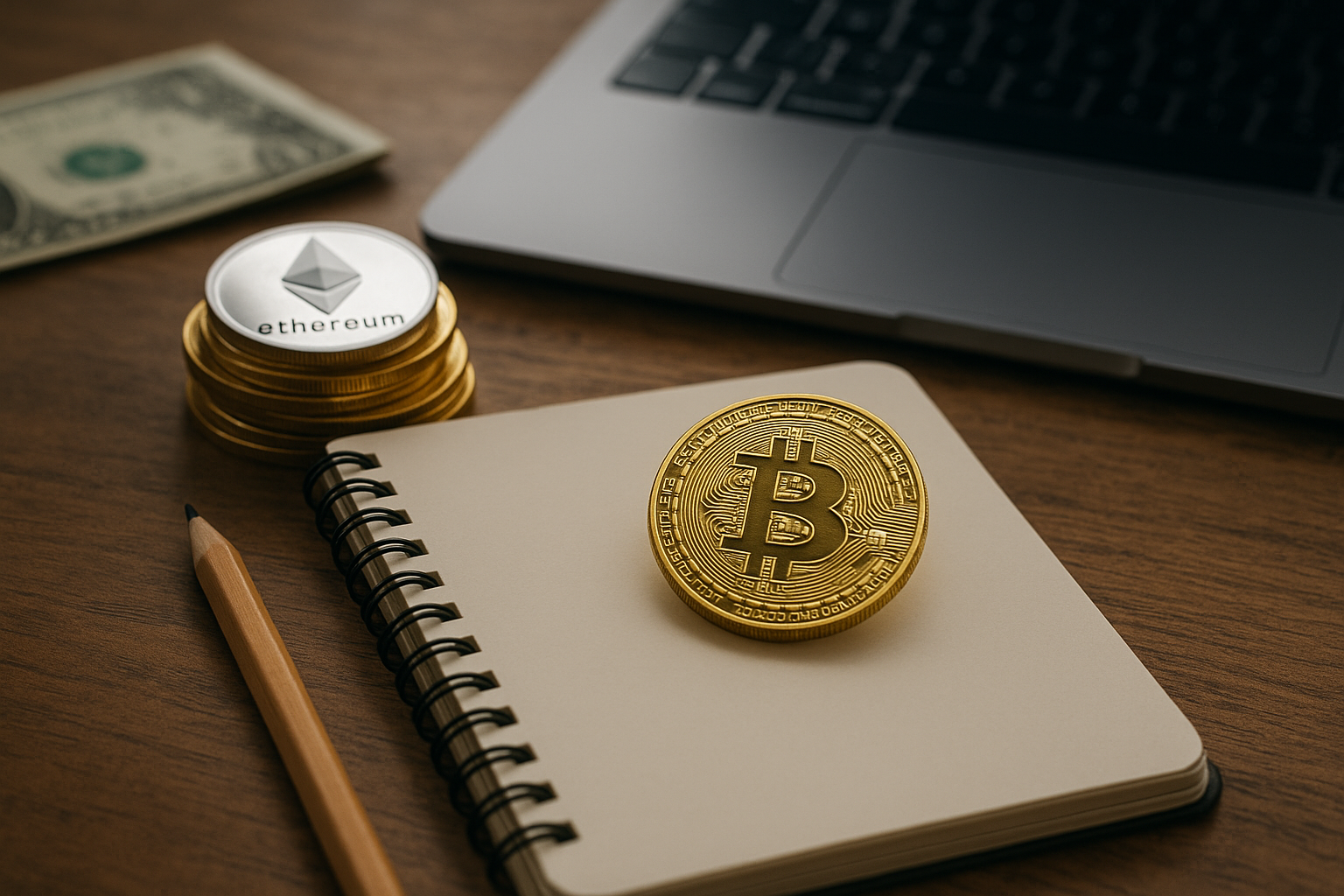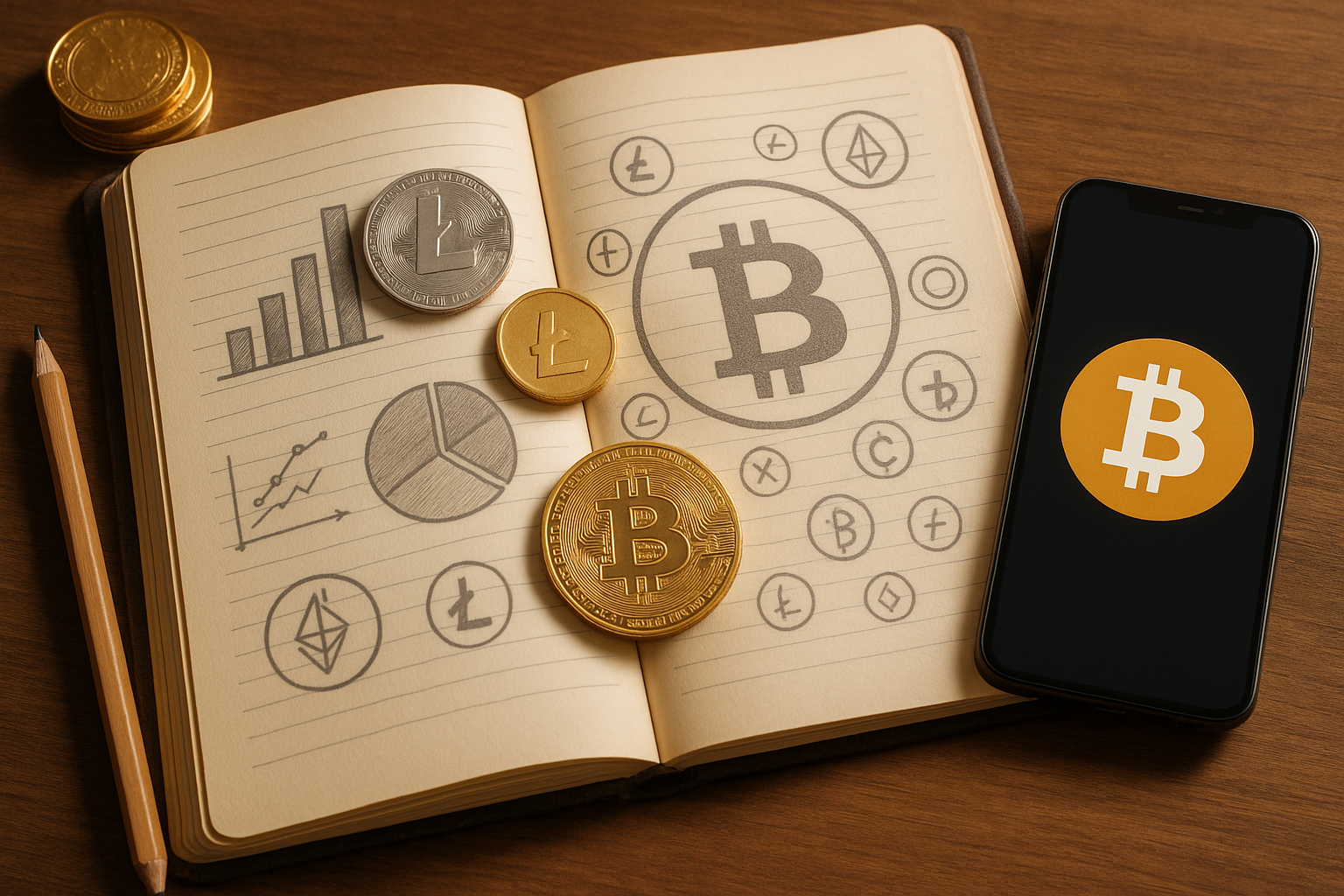Cryptocurrency exploded into public awareness over the last decade. For many beginners it feels complex, technical, and risky — but with a few basic concepts and sensible practices, anyone can understand the landscape and take their first steps safely. This guide explains the essentials in plain language and gives a practical path to getting started.
What is cryptocurrency?
– Cryptocurrency is digital money that uses cryptography to secure transactions and to control the creation of new units.
– Most cryptocurrencies run on a blockchain, a shared, decentralized ledger that records transactions across many computers so the record is transparent and hard to change.
– Bitcoin was the first and remains the most well-known. Thousands of other tokens (altcoins) follow different goals — faster payments, smart contracts, privacy, or governance.
Key concepts
– Blockchain: A linked chain of blocks that contain transaction data. Each block references the one before it, making tampering difficult.
– Decentralization: No single entity controls the network; decisions are often made by consensus among nodes or token holders.
– Private key / public key: Your private key is a secret number that proves ownership of coins and signs transactions. The public key (or derived address) is what you share to receive funds. If you lose your private key or seed phrase, you lose access to your funds.
– Seed phrase (recovery phrase): A human-readable series of words generated when you create a wallet. It’s the master key to recreate your wallet — keep it safe and offline.
– Wallet: Software or hardware that stores your keys and lets you send and receive crypto. Wallets do NOT store coins; the blockchain does — wallets store the keys that control them.
Types of wallets
– Custodial wallets (exchange wallets): The service holds your private keys. They’re convenient for trading but mean you trust a third party.
– Non-custodial (self-custody) wallets: You hold your keys (software wallets on your phone/desktop or hardware wallets like Ledger/Trezor). Greater control and responsibility.
– Hot wallets: Connected to the internet; convenient but more exposed to hacks.
– Cold wallets: Offline storage (hardware wallets, paper wallets); best for long-term holdings.
How transactions work (simple)
1. You instruct your wallet to send X coins to an address.
2. Your wallet signs the transaction with your private key.

3. The transaction is broadcast to the network.
4. Miners or validators include it in a block and confirm it; confirmations increase security.
Where to buy crypto
– Centralized exchanges (CEX): Coinbase, Binance, Kraken, etc. They allow fiat-to-crypto purchases, trading pairs, and are user-friendly.
– Decentralized exchanges (DEX): Uniswap, PancakeSwap — trades directly from your wallet without a central custodian. Often used for tokens not listed on CEX, but require more knowledge and carry smart contract risk.
– Peer-to-peer (P2P): Buying directly from another person via escrow services.
Beginner’s step-by-step guide
1. Educate yourself
– Learn basic blockchain and wallet concepts. Follow reputable news sites or educational resources. Avoid hype.
2. Choose a reputable exchange or broker
– Check fees, security history, regulatory compliance, and user reviews. Complete KYC (identity verification) if required.
3. Set up a wallet
– For day-to-day use, a software/mobile wallet is fine. For significant holdings, buy a hardware wallet and move long-term holdings there.
4. Secure your accounts
– Use strong, unique passwords and a password manager.
– Enable two-factor authentication (2FA) using an authenticator app (not SMS).
– Back up your seed phrase offline in multiple secure locations — never store it digitally or share it.
5. Start small

– Buy a small amount to practice sending, receiving, and securing coins. Treat it like a learning expense.
6. Transfer to self-custody if long-term
– If you plan to hold rather than trade, move assets off exchanges into a personal wallet you control.
7. Track and review
– Keep records for tax purposes, and periodically review security settings and holdings.
Common risks and how to mitigate them
– Volatility: Crypto prices can move dramatically. Only invest what you can afford to lose.
– Hacks & scams: Use reputable services, enable 2FA, and avoid clicking unknown links. Don’t send crypto to people promising guaranteed returns.
– Phishing: Official sites and wallets won’t ask for your seed phrase. Treat every request for your private keys as malicious.
– Rug pulls and exit scams: Be wary of new tokens with promises of huge returns, unknown teams, or locked/unlocked liquidity.
– Smart contract bugs: DeFi involves interacting with code that can have vulnerabilities. Use audited projects and limit exposure.
Basic strategies
– HODL (hold): Buy and hold long-term, based on belief in the project or asset.
– Dollar-cost averaging (DCA): Invest a fixed amount at regular intervals to reduce timing risk.
– Trading: Active buying/selling requires experience, risk management, and emotional control — not recommended for absolute beginners without practice.
– Diversification: Don’t put everything into one coin. Consider different sectors (payments, smart contracts, stablecoins) but avoid over-diversifying into hundreds of speculative tokens.
Taxes and regulation
– Cryptocurrencies are taxable in many countries. Common events that trigger tax: buying/selling, trading, spending crypto, receiving crypto as income or mining rewards.

– Keep detailed transaction records and consult local tax guidance or a tax professional. Compliance is important.
Intro to DeFi and NFTs (brief)
– DeFi (decentralized finance): Financial services powered by smart contracts — lending, borrowing, decentralized exchanges, yield farming. Offers innovation but higher technical and smart contract risk.
– NFTs (non-fungible tokens): Unique digital assets representing ownership of art, collectibles, or other items. Speculative and illiquid at times; research projects before buying.
Practical tips
– Use testnets or small amounts to learn before committing real funds.
– Prefer well-known coins (Bitcoin, Ethereum, major stablecoins) when starting.
– Keep software updated, and verify URLs before entering sensitive info.
– If you use a hardware wallet, buy it from the manufacturer; never from a third party that might have tampered with it.
– Join community channels of projects, but treat social media endorsements skeptically.
Glossary (short)
– Altcoin: Any cryptocurrency other than Bitcoin.
– Stablecoin: A token pegged to a stable asset (like USD) to reduce volatility (e.g., USDC, USDT).
– Gas/transaction fee: What you pay to the network to process a transaction.
– Ledger/Explorer: Tools to view blockchain transactions publicly (e.g., Etherscan).
Final thoughts
Cryptocurrency can offer new financial tools and opportunities, but it requires careful study and disciplined security practices. Start small, protect your keys, use reputable services, and keep learning. This guide gives you the foundation — continue researching, ask questions in trusted communities, and treat all investments with appropriate caution.
This is educational information, not financial or legal advice. For personalized guidance, consult a qualified professional.

